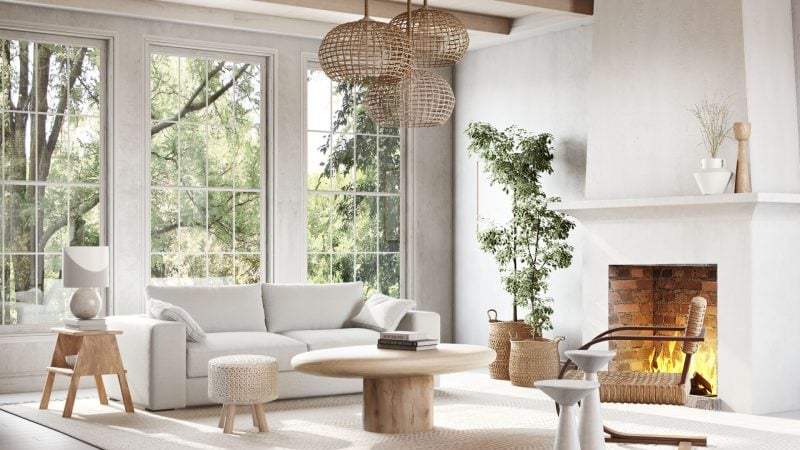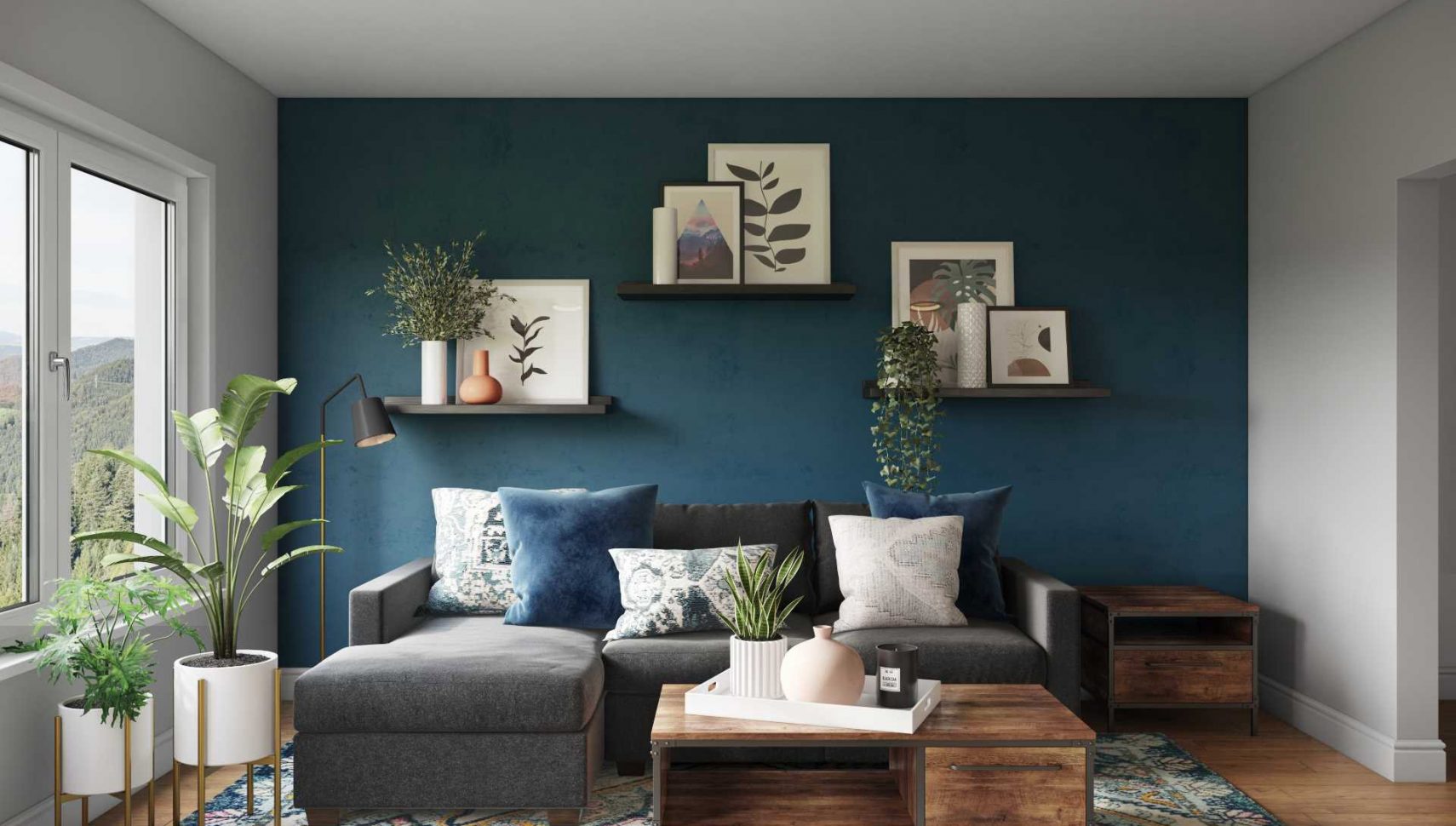In our post about color psychology, the color green came up a lot. No surprise—Green is considered the most restful color for the eye, while simultaneously symbolizing all things fresh and new. As we continue to practice social distancing, there’s nothing we need more than a calming environment with an added boost of freshness. You could paint your room green (here are a few ideas), but for a smaller commitment and a bigger health impact, try adding houseplants to your space instead.
According to a NASA study, plants can remove 87 percent of air toxins in just 24 hours. WebMD shares that rooms without house plants contain more dust and mold than rooms with houseplants, and that houseplants can also help reduce VOCs. If you’re looking for “air scrubbers,” try plants like English ivy, dracaena (also known as a dragon tree), and asparagus fern. Spider plants are known to improve indoor air quality by boosting humidity to a more comfortable level—a must when you’re running the AC all summer or the heat all winter. And if you’re looking for plants to trap dust, allergens and other airborne particles, try a peace lily, Chinese evergreen, or violet.

Adding plants to our living space fosters a connection to nature, which can help decrease stress and increase creativity. But you don’t need to be an avid gardener to keep a houseplant happy. It all starts with identifying the light levels in your space—and the commitment level you’re willing to bring.
For absolute beginners, a hardy plant like pothos vine or sansevieria is a good choice (confession: I have both!). These types of plants are resilient and practically failsafe. They don’t require direct light or much water but still beautify your space and improve air quality.
If you have your heart set on a fiddle-leaf fig, proceed with caution. These plants, while beautiful, can be a bit finicky and require lots and lots of bright light. They also prefer a temperate climate of 65 to 75 degrees, meaning they’re not a good choice for homes in areas that regularly skew outside these temperatures. You’d be better off choosing a plant suited to your home’s conditions than shelling out for a different variety and watching it decline.
Once you’ve selected a houseplant that suits your home’s light and temperature conditions, select a decorative pot or planter with good drainage. While these can get expensive, they don’t have to be. Personally, I love the look of simple terracotta, which is incredibly affordable, develops a beautiful patina over time, and complements a range of design styles.
Note: If you’re a pet owner, know that several plants can be toxic to pets when ingested. The ASPCA has a helpful guide to toxic and non-toxic plants for pets to review.

From an aesthetic perspective, plants add a sense of organic softness, complementing boho styles and adding contrast to more minimalist, modern design sensibilities. The type of vessel you place your plant in can convey different looks—terracotta is a classic choice, but you could also toy with mid-century-inspired brass pots, minimalist ceramic planters, rustic planters, and even baskets. Even the type of plant you choose can align with certain styles. Sansevierias, for example, look great in modern design schemes, while lacy ferns like asparagus and lemon button ferns radiate a sense of bohemian or even traditional style.
Another tip for styling houseplants is to consider the room they’ll reside in. Bathrooms are humid but often low on light—you’ll want to choose a type of plant that can withstand those conditions. You’ll also likely want to select a small plant for a bathroom space, compared with a living room, where a larger plant or tree would fit right in.
Finally, while you won’t get the health benefits, like improving air quality and reducing stress, we’re realists: for some people, it’s better to get a convincing fake plant than stress yourself out over killing a real plant. Luckily, there are beautiful faux houseplants out there, including pre-potted eucalyptus from CB2, an olive leaf tree from West Elm (perfect for farmhouse and traditional design), and an attractive fiddle leaf in a turned-wood planter, also from West Elm. Faux houseplants cost much more than their real counterparts, but they’ll truly last a lifetime.

Want a tailored plan to pick the right plants for your aesthetic and lifestyle? Get started with our interior design quiz.

